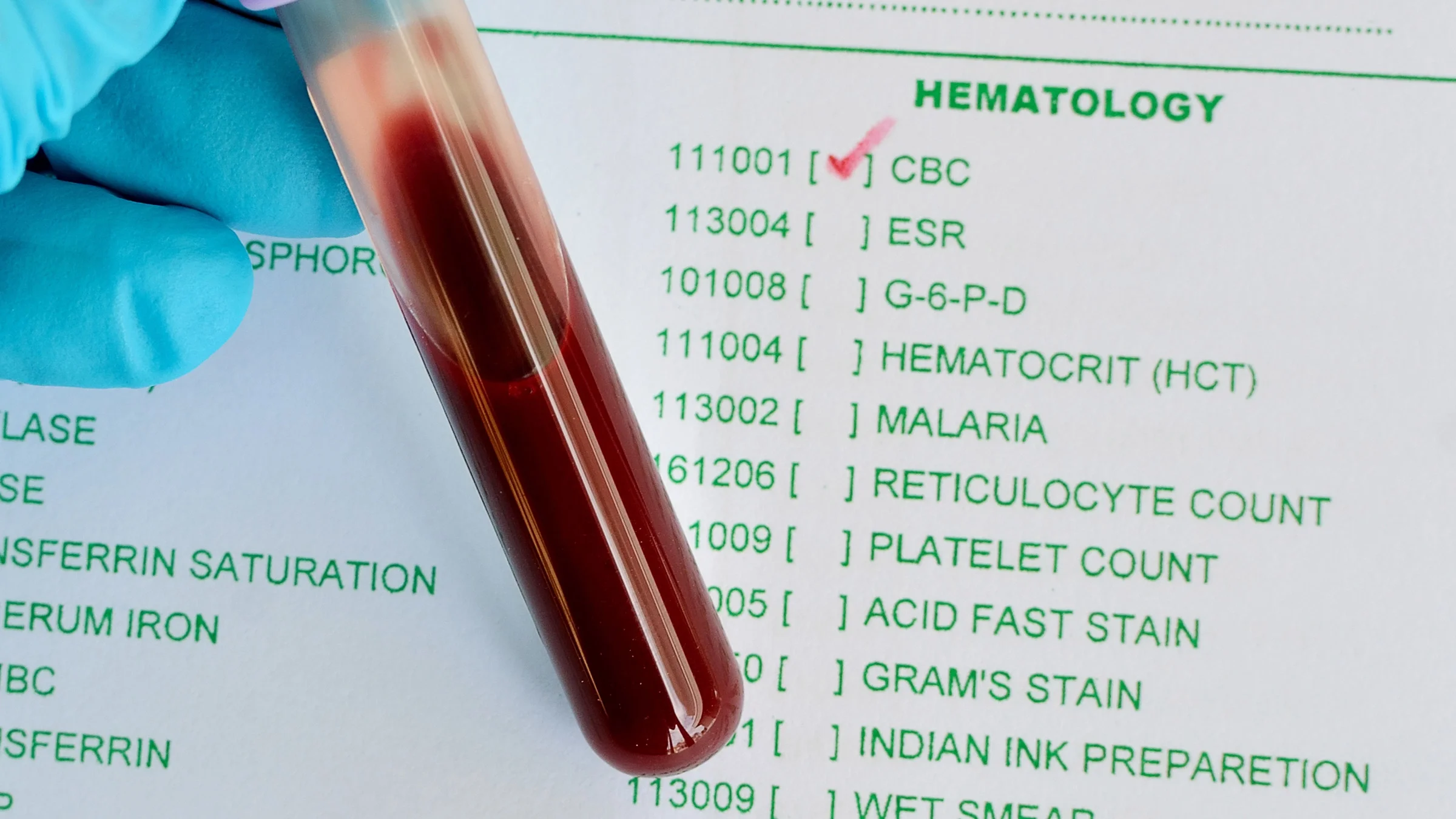
The Complete Blood Count, ubiquitously referred to as a CBC, is far more than a mere tally of the cells floating in the bloodstream; it is a fundamental diagnostic tool, an intricate snapshot of the physiological condition of the body’s internal environment at a cellular level. This relatively simple laboratory test, typically involving a minimal blood draw, yields a surprisingly dense collection of quantifiable data points that offer clinicians deep, though non-specific, clues about overall health status. It is often among the very first tests requested by a physician, not because it definitively diagnoses a single disease, but because it provides an essential, wide-ranging survey of the three major cellular components of blood—red cells, white cells, and platelets—each of which plays a distinct and critical role in human function and response to illness or injury. Interpreting a CBC is a complex act of pattern recognition, where aberrations in cell counts, sizes, or hemoglobin content point toward a variety of possibilities ranging from subtle nutritional deficiencies to acute infections and potentially chronic or severe hematological disorders.
…it provides an essential, wide-ranging survey of the three major cellular components of blood—red cells, white cells, and platelets…
The primary function of the red blood cell series, which comprises the first and arguably most pivotal section of the CBC report, is to manage the essential task of gas exchange, carrying oxygen from the lungs to the peripheral tissues and shuttling carbon dioxide back for exhalation. The key measurable metrics here are the Red Blood Cell (RBC) count, the Hemoglobin (Hb) concentration, and the Hematocrit (Hct). Hemoglobin, an iron-rich protein, is the actual molecular carrier of oxygen, and its absolute amount (Hb) is the most critical measure of the blood’s oxygen-carrying capacity. The hematocrit represents the percentage of whole blood volume composed of red cells. When these three values are disproportionately low, the general diagnosis of anemia is established, which signifies a reduced capacity for oxygen delivery. Conversely, abnormally high values can indicate conditions like polycythemia or simply profound dehydration, where the blood volume has decreased relative to the concentration of red cells. The careful consideration of the relationship between these three core numbers is the first step in unlocking the CBC’s diagnostic potential, offering an initial structural assessment of the body’s most fundamental transportation system.
The key measurable metrics here are the Red Blood Cell (RBC) count, the Hemoglobin (Hb) concentration, and the Hematocrit (Hct).
Beyond the sheer count and volume, the red blood cell indices provide a layer of granular detail indispensable for differentiating the various forms of anemia, which are not a single condition but a diverse group of disorders with manifold underlying causes. The Mean Corpuscular Volume (MCV) is perhaps the most heavily relied upon of these indices, reporting the average size of the circulating red cells. An MCV below the established normal range points toward microcytic anemia, a common finding in iron deficiency or thalassemia, where the cells are characteristically smaller than normal. Conversely, an elevated MCV indicates macrocytic anemia, typically associated with deficiencies in essential vitamins like B12 or folate, which are vital for proper cell division and maturation. Two other crucial indices are the Mean Corpuscular Hemoglobin (MCH) and the Mean Corpuscular Hemoglobin Concentration (MCHC). The MCH quantifies the average amount of hemoglobin in a single red cell, while the MCHC goes a step further by calculating the average concentration of hemoglobin within a unit volume of red cells. When both are low, the condition is termed hypochromic, signifying a lack of hemoglobin and often pointing directly back to an iron-related problem. The Red Cell Distribution Width (RDW), which measures the variation in red cell size, adds a further dimension, with a high RDW suggesting a mix of both large and small cells, known as anisocytosis, which frequently emerges early in the progression of many anemias.
…pointing directly back to an iron-related problem.
The White Blood Cell (WBC) count and its associated differential constitute the second major analytical section of the CBC, offering a window into the dynamic activity of the immune system. White blood cells, or leukocytes, are the body’s primary line of defense against infection, inflammation, and abnormal cellular processes, and their numbers fluctuate dramatically in response to internal and external threats. A total WBC count that is significantly elevated, termed leukocytosis, most commonly signals an active infectious process or a pronounced inflammatory state, as the body aggressively mobilizes its defenses. Conversely, a low WBC count, or leukopenia, can be a sign of a compromised immune system, perhaps due to viral infections, bone marrow failure, autoimmune destruction, or as a side effect of certain medications, such as chemotherapy. The true power of this section, however, lies in the differential count, which breaks down the total WBC count into the percentages and absolute numbers of the five specific types of leukocytes: neutrophils, lymphocytes, monocytes, eosinophils, and basophils.
…the true power of this section, however, lies in the differential count, which breaks down the total WBC count into the percentages and absolute numbers of the five specific types of leukocytes…
Each of the five leukocyte subpopulations possesses a distinct, specialized immunological role, and a shift in their relative or absolute numbers provides indispensable, directed diagnostic clues. An absolute increase in neutrophils, for example, is the classic, highly indicative sign of an acute bacterial infection, as these cells are the first responders to such threats. A rise in lymphocytes, known as lymphocytosis, often points toward a viral infection, such as mononucleosis, or, in more concerning scenarios, certain lymphomas or leukemias. Eosinophils, on the other hand, are the cells most closely associated with allergic reactions and parasitic infestations, and their isolated elevation is typically interpreted within those contexts. Monocytes, the large, scavenging cells of the immune system, increase in chronic inflammatory conditions and certain chronic infections, playing a key role in cleaning up cellular debris. Finally, basophils, while the least common, are involved in allergic responses, releasing histamine and other mediators. The pattern of these individual cell counts—for instance, high neutrophils with low lymphocytes—offers a specific immunological fingerprint that can steer the clinician toward a definitive category of illness, even before culture results or advanced imaging are available, demonstrating the profound informational density contained within the differential.
Eosinophils, on the other hand, are the cells most closely associated with allergic reactions and parasitic infestations…
The final integral component of the CBC is the Platelet (PLT) count, a measurement of the tiny, non-nucleated cellular fragments, also known as thrombocytes, that are absolutely essential for the initial stages of hemostasis, or blood clotting. These minuscule cell fragments are responsible for forming a primary plug at the site of a vascular injury, initiating the complex cascade that leads to the formation of a stable fibrin clot. An abnormally low platelet count, or thrombocytopenia, can lead to a significant bleeding risk, as the body struggles to seal even minor breaches in the blood vessel walls. This condition can be caused by problems with platelet production in the bone marrow, such as in cases of certain anemias or cancer, or by increased destruction or consumption of platelets in the bloodstream, often associated with autoimmune disorders or disseminated intravascular coagulation. Conversely, an elevated platelet count, or thrombocytosis, can increase the risk of inappropriate and potentially dangerous blood clot formation within blood vessels, which can lead to complications such as stroke or heart attack. Monitoring the platelet count is paramount in patients undergoing treatment for cancer, those with known clotting disorders, or individuals receiving anticoagulation therapy, as their levels must be maintained within a very specific and narrow therapeutic window.
…the need for a CBC arises from one of three primary clinical objectives…
Understanding why a CBC is ordered illuminates its indispensable role in clinical practice. Broadly speaking, the need for a CBC arises from one of three primary clinical objectives: screening, diagnosis, or monitoring. As a screening tool, the CBC is routinely integrated into annual physical examinations and general health check-ups, where it acts as a non-invasive surveillance mechanism to detect occult, or hidden, disorders before symptoms manifest. For diagnostic purposes, the CBC becomes the immediate tool of choice when a patient presents with non-specific, yet concerning, symptoms such as chronic fatigue, unexplained fever, unusual bruising or bleeding, or signs of inflammation. The deviations in the various cell lines rapidly point the investigating physician toward potential causes, guiding the necessity for more targeted, specialized testing. Finally, for patients with established chronic conditions like cancer, chronic kidney disease, or autoimmune disorders, the CBC is ordered frequently as a monitoring tool to track the progression of the disease or, critically, to assess the potentially toxic side effects of ongoing medical treatments, such as chemotherapy’s impact on bone marrow function, allowing for timely adjustments to the therapeutic regimen.
…a low WBC count, or leukopenia, can be a sign of a compromised immune system…
The interpretation of a CBC is an exercise in contextual clinical judgment, and it is a common pitfall to view any single flagged result in isolation. A result that falls outside of the established laboratory reference range is not, in itself, a diagnosis; it is an indicator that requires further investigation. For instance, a mild, isolated drop in the red blood cell count may be a completely normal physiological variation in an otherwise healthy individual, while the same drop in a patient reporting profound fatigue and shortness of breath demands immediate, comprehensive evaluation for the cause of their anemia. Similarly, a slightly elevated white blood cell count in a person who is stressed or recently completed a strenuous workout is physiologically normal, but an identical reading in a person with a high-grade fever is highly significant for an acute infection. The data must always be synthesized with the patient’s complete medical history, age, sex, current medications, and presenting symptoms. It is a piece of a larger puzzle, and a skilled practitioner uses the numeric clues provided by the CBC to construct a coherent clinical narrative, rather than simply treating the numbers themselves.
The data must always be synthesized with the patient’s complete medical history, age, sex, current medications, and presenting symptoms.
The process of obtaining the blood sample itself is a relatively quick and standard phlebotomy procedure, typically taken from a vein in the antecubital fossa of the arm. While preparation is minimal—fasting is generally not required unless other related tests, such as a blood glucose panel, are being conducted concurrently—patients should always inform the medical staff of any medications, especially blood thinners, that they may be taking, to ensure proper site care after the draw. The modern automated hematology analyzer processes the blood sample with incredible speed and precision, using laser technology to count, measure, and differentiate the cellular components. This technological advancement has transformed the CBC from a tedious, manual counting process into a rapid, highly standardized procedure, making it economically feasible for widespread, routine use. The reliability and reproducibility of the results are extraordinarily high, which is a major factor in the CBC’s continued status as one of the cornerstones of all laboratory medicine, providing a consistent, verifiable baseline for comparison across multiple time points in a patient’s health journey.
…the reliability and reproducibility of the results are extraordinarily high…
In essence, the CBC is the medical equivalent of a census for the cellular elements of the circulating blood—a precise and invaluable report detailing the quantity, quality, and relative distribution of the body’s oxygen carriers, immune defenders, and clotting agents. Its utility spans the entire spectrum of medical practice, from preventive medicine to the intricate monitoring of complex, life-threatening diseases. The test’s lasting relevance lies not in its simplicity as a procedure but in the complex, layered information it yields, providing the foundational metrics upon which countless critical diagnostic and therapeutic decisions are based every single day. A thorough understanding of the CBC moves a patient from a state of passive testing to one of informed collaboration in their own healthcare, recognizing the profound stories contained within those columns of numbers.
